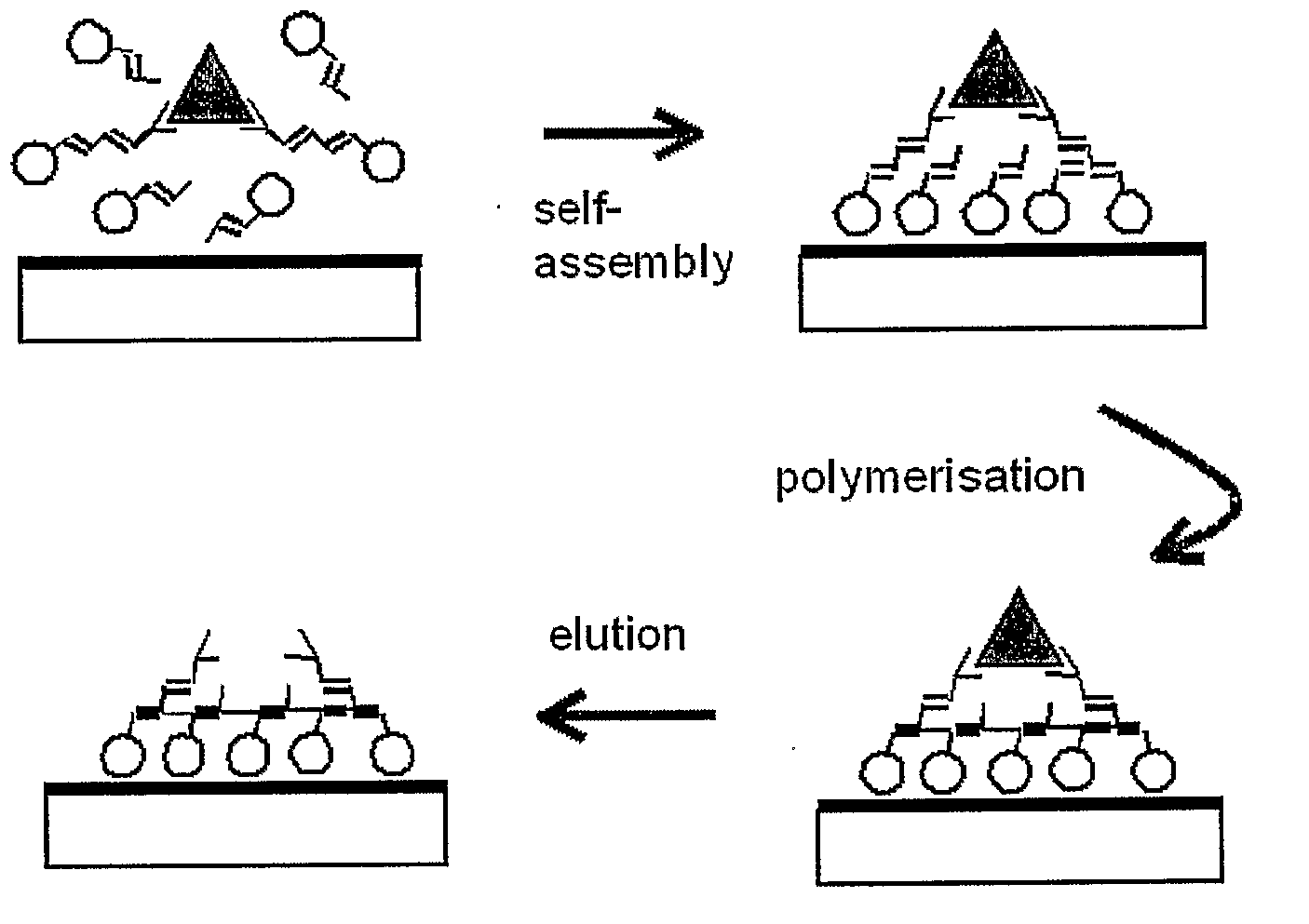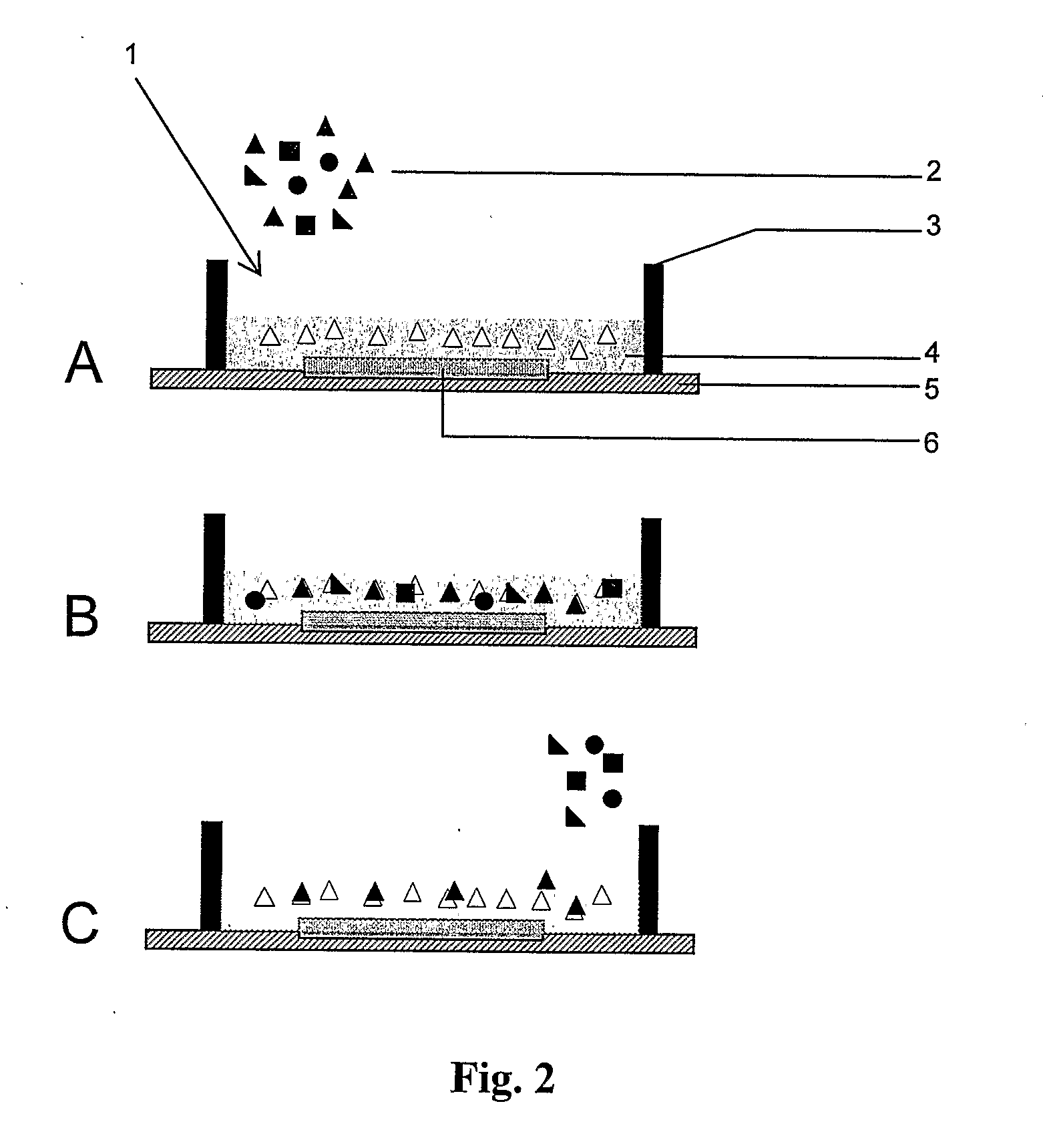Sensor
a sensor and sensor technology, applied in the field of sensors, can solve the problems of poor reproducibility, multiple compelling needs remain unmet, and biomolecules typically suffer, and achieve the effect of reducing sensitivity
- Summary
- Abstract
- Description
- Claims
- Application Information
AI Technical Summary
Benefits of technology
Problems solved by technology
Method used
Image
Examples
example 1
Sensor Preparation
[0052]A sensor was prepared by microfabricating a sensor chip and immobilising a MIP on the transducer using the methodology discussed in WO 2005 / 075995 and WO 2006 / 120381.
[0053]Specifically, to ensure the robust attachment of the MIP layer to the electrode surface as well as gain control over the polymer formation, the polymerisation initiator was firstly anchored to the electrodes. Clean oxidised platinum electrodes were exposed to 3% 3-aminopropyl triethoxysilane in dry toluene for 3 hours in order to introduce amino functionalities at the sensor surface. The polymerisation initiator 4,4′-azobis(cyanovaleric acid) was then covalently attached to the amino layer via carbodiimide coupling by exposing the derivatised sensor to a mixture of 20 mM 4,4′-azobis(cyanovaleric acid), 17 mM N-(3-dimethylaminopropyl)N′-ethylcarbodiimide and 28 mM 1-hydroxybenzotriazole. The reaction was left to take place at room temperature in the dark for 5 hours. The derivatised electrod...
example 2
Sensor Evaluation
[0055]Samples of phosphate-buffered saline containing the anaesthetic propofol in the presence of the interferents uric acid and ascorbic acid were introduced to the MIP and the analyte and interferents were allowed to bind to the MIP. The MIP having the bound analyte and interferents was then washed with phosphate-buffered saline (140 mM NaCl, 10 mM phosphate). Measurements were taken using an amperometric transducer at varying times and the results are shown in FIG. 3.
[0056]FIG. 3A shows the signal of the interferents alone with no propofol (labelled “0 uM”), and the interferents in the presence of 135 μM of propofol (labelled “135 uM”). FIG. 3B shows a region of graph (A) in greater detail illustrating the sharp drop in signal due to the rapid removal of the weakly bound interferents and the slow signal decrease in the presence of propofol. In this example, the signal 30 s following the start of the washing step was taken to be a measure of the concentration of t...
PUM
| Property | Measurement | Unit |
|---|---|---|
| voltage | aaaaa | aaaaa |
| thick | aaaaa | aaaaa |
| pH | aaaaa | aaaaa |
Abstract
Description
Claims
Application Information
 Login to View More
Login to View More - R&D
- Intellectual Property
- Life Sciences
- Materials
- Tech Scout
- Unparalleled Data Quality
- Higher Quality Content
- 60% Fewer Hallucinations
Browse by: Latest US Patents, China's latest patents, Technical Efficacy Thesaurus, Application Domain, Technology Topic, Popular Technical Reports.
© 2025 PatSnap. All rights reserved.Legal|Privacy policy|Modern Slavery Act Transparency Statement|Sitemap|About US| Contact US: help@patsnap.com



